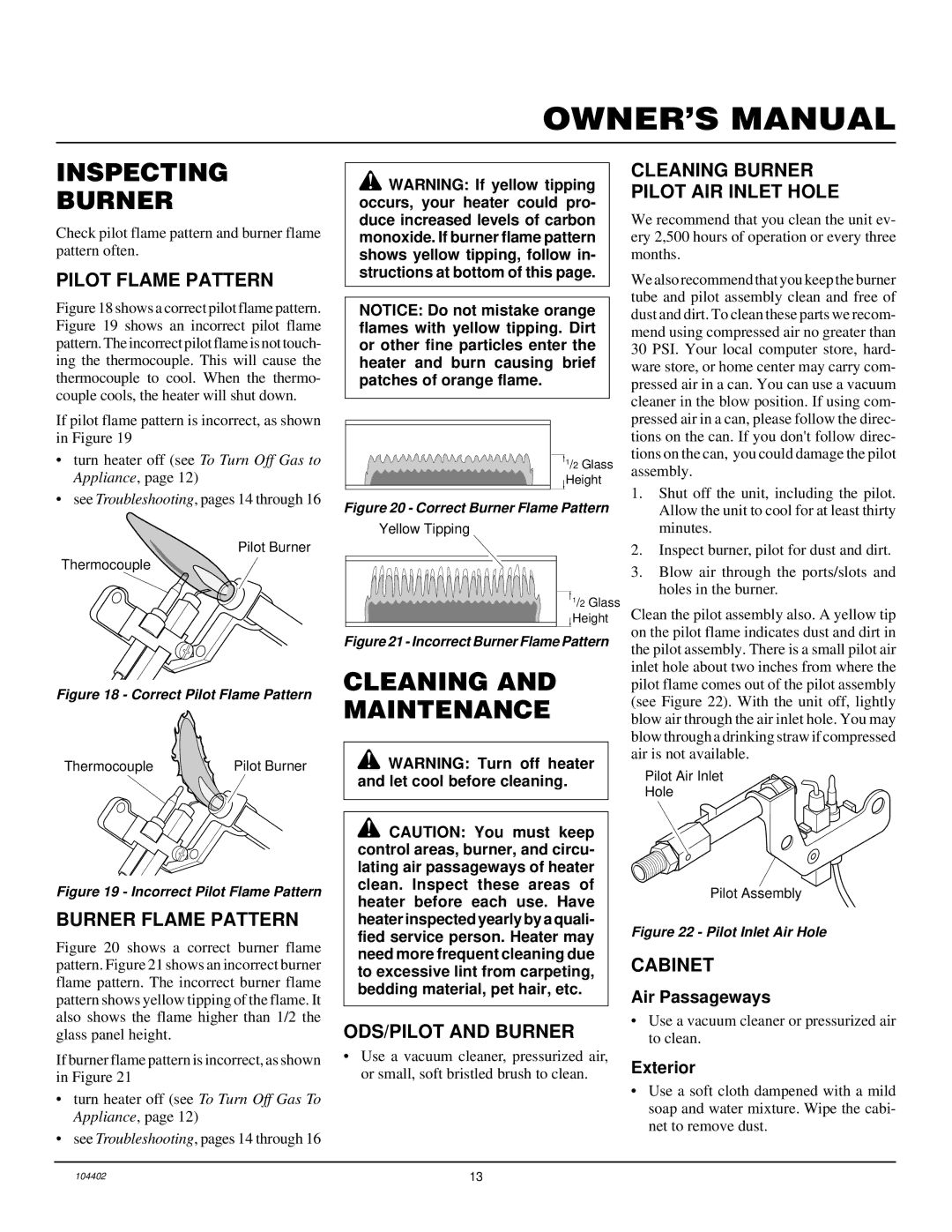VN2000BTD, VN2800BTD specifications
The Desa VN2800BTD and VN2000BTD are two advanced space heaters that represent the pinnacle of technology and design in the heating industry. Both models are engineered for efficiency, ensuring warmth and comfort in various settings, from homes to workshops.One of the primary features of the VN2800BTD and VN2000BTD is their versatility in application. They are ideal for supplemental heating, capable of warming up rooms quickly and effectively with an easy-to-use design. The VN2800BTD boasts an output of 28,000 BTUs, while the VN2000BTD offers a slightly lower but still robust output of 20,000 BTUs. This makes them suitable for a diverse range of spaces and heating needs.
A key characteristic of these models is their advanced technology, which includes a forced air heating mechanism. This system allows heated air to circulate rapidly throughout the room, providing even warmth without the cold spots often found in traditional heaters. Both units are fueled by propane, making them highly efficient and eco-friendly compared to electric options.
Safety is another significant aspect of the Desa VN2800BTD and VN2000BTD. These models are equipped with automatic shut-off features that activate in case of a malfunction or if the heater tips over. Additionally, they have built-in oxygen depletion sensors that monitor air quality, ensuring safe operation in enclosed spaces. This focus on user safety reflects Desa's commitment to providing reliable heating solutions.
The design of the VN2800BTD and VN2000BTD is pragmatic and attractive, allowing them to blend seamlessly into any environment. They come with a durable construction that ensures longevity, even under demanding conditions. Portability is another benefit; both models often feature handles or wheels that make it easy to transport them from one area to another, enhancing their utility.
Easy ignition systems are another highlight, with many units incorporating a piezo ignition feature that allows for quick and reliable starts. This user-friendly approach minimizes the hassle often associated with traditional heating methods.
In summary, the Desa VN2800BTD and VN2000BTD heaters are exemplary products that combine powerful heating capabilities with safety and user convenience. Their advanced technology and thoughtful features make them an outstanding choice for anyone looking to enhance their comfort through effective space heating solutions.

